About This Easy Asturias Guitar Tab:
Isaac Albéniz was one of the most important Spanish composers of his time. In addition, his skills as a pianist and composer earned him critical acclaim. Albeniz never actually wrote a piece for the guitar, but arrangements of his music are staples of the guitar repertoire.
In particular, Asturias (Leyenda) is one of the most famous and beloved music for classical guitar. The piece draws from Andalusian flamenco traditions. Though it was written for piano, it is rumored that Albeniz preferred Tarrega’s guitar arrangement.
Click this link to get a print friendly version of this sheet music for your music stand.
This easy Asturias guitar tab arrangement is simplified and shortened, suitable for beginners. I hope it allows you to play a fair version of this exciting music.
Check out the video above for a tab play-through and a performance of the music. Also, stay tuned for five helpful tips on how to play this easy music for classical guitar. Don’t forget to download a free PDF of the Asturias tab and sheet music that goes with this lesson (see the link in the yellow box above to access).
See below for some handy tips for getting this easy Asturias guitar arrangement under your fingers (relevant sections from the video are indicated as timecode.)
Easy Asturias Guitar Tip 1 (see video at 2:30):
Decide your right-hand fingering early. When you practice, your brain connects with the muscles you used for the task. Repetition builds strong neural pathways, making the action more natural.
This connection is called muscle memory. Muscle memory accumulates every time you practice, which is why practice improves our playing. On the other hand, habits are harder to break than they are to build, so we must learn and repeat the correct actions as soon as possible.
Play all the bass notes with your thumb, and play the high notes with a different finger.
The right-hand fingering in the free PDF is labelled according to standard practice.
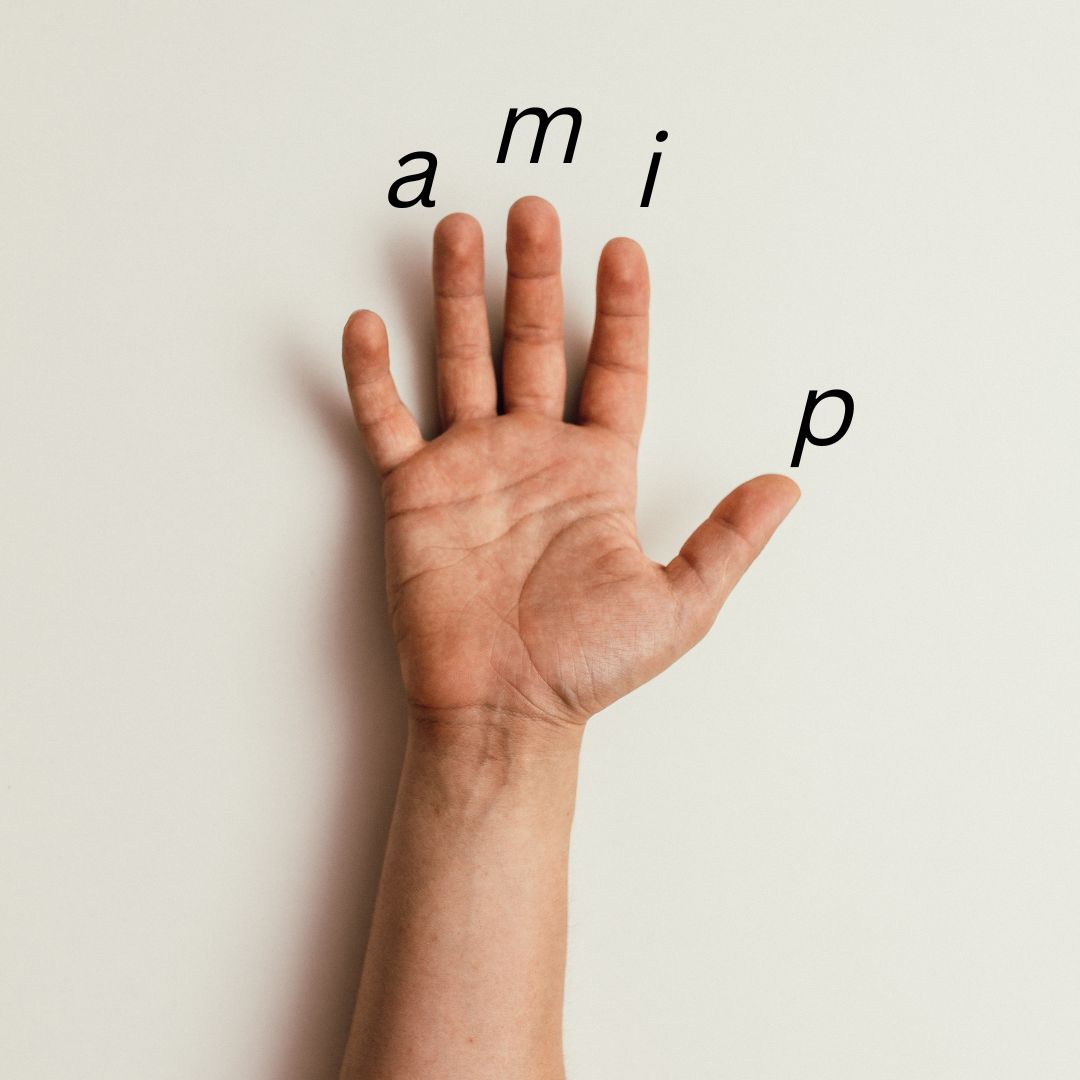
Asturias Guitar Tip 2 (3:20):
We make certain technique choices to help us play the music more effortlessly; other choices are more stylistic and add character to the music. Sometimes these factors are both taken into consideration, or sometimes they conflict.
Speaking of which, at the end of the piece, in measure 17, we can use a thumb brush stroke or thumb rest stroke to brush across both Es on beat 1. You can do this easily by tilting your right hand forward, with knuckles closer to the ground.
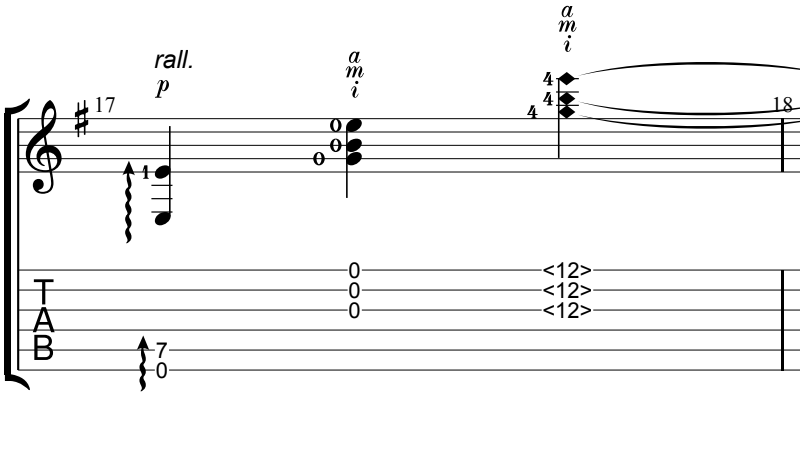
The thumb stroke is more efficient than moving the right hand to pluck both strings with other fingers (for example, i and m). It also gives you a loud and round guitar tone – perfect for the drama in Asturias.
Asturias Guitar Tip 3 (3:58):
Moving on to left-hand fingering choices – check out measure 9 (the same as measures 10, 13 and 14).
In particular, the last two bass notes: B (fret 9, string 4) and F# (fret 9, string 5). A beginner might automatically reach for the B with their third finger, only to have to hop to the F# soon after with the same finger.
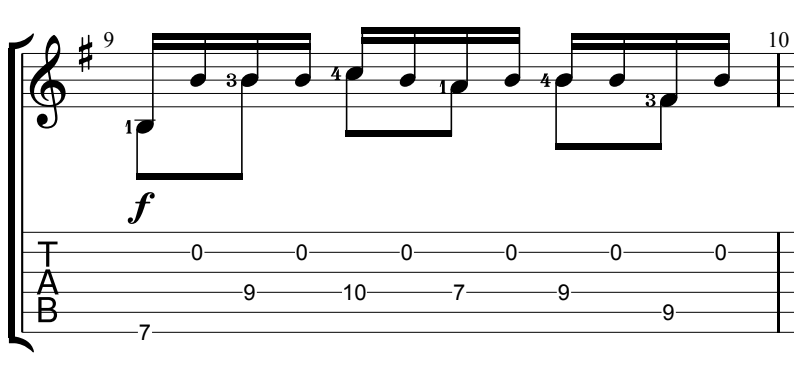
Instead, use your pinky for the second last bass note in measure 9. Using the pinky for the B note means seamlessly finding the F# with your third finger without an extra jump.
This kind of economy of motion makes you play more efficiently. Effectively you will be moving slower yet playing at the same tempo.
Asturias Guitar Tip 4 (4:52):
You can make a more advanced left-hand fingering choice in measure 15. Check out the first two bass notes: B (fret 7, string 6) and A (fret 7, string 4).
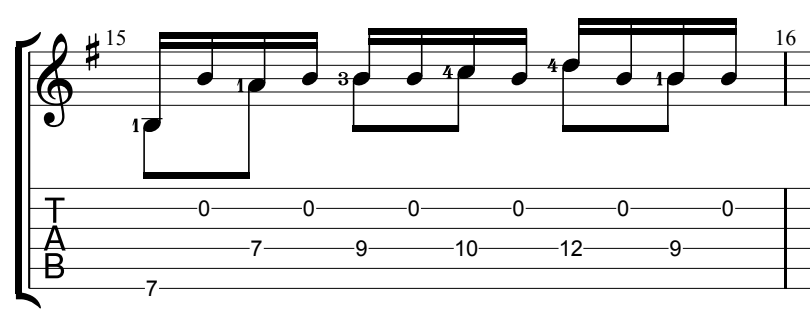
You may find it challenging to leap between the B and the A in time, so instead, you can try a half-barre with your index finger in measure 15. Do this by flattening your index finger to press fret 7 across the bass strings.
If this feels too difficult, you can hop or use your middle finger instead. Practice the technique and incorporate it into the piece later since it can make the transition between the two notes sound more fluid.
Asturias Guitar Tip 5 (5:35):
Use a metronome. Turn on your metronome as soon as possible. It will help develop your ear and your sense of rhythm. It can also be a fun way to measure your improvement.
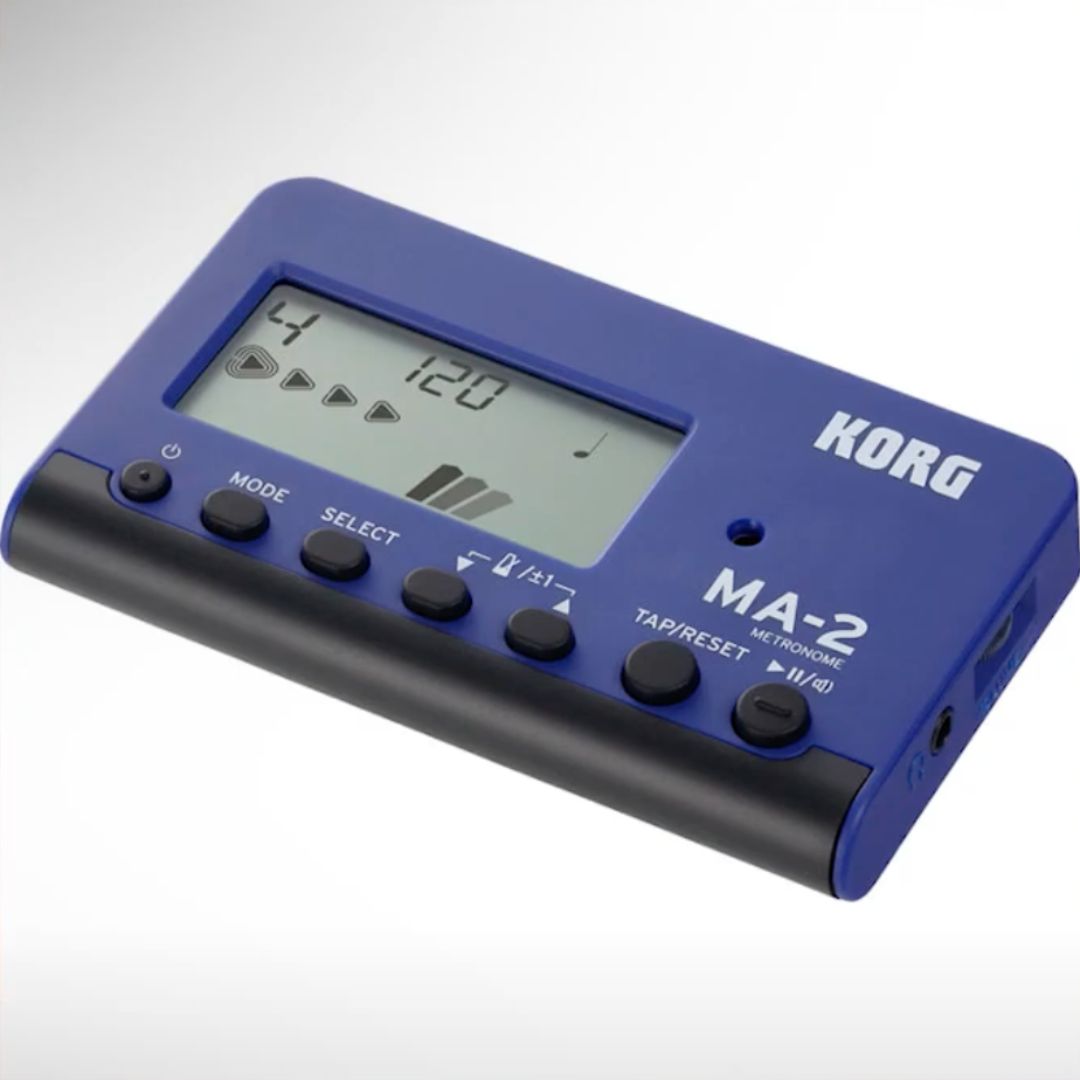
Keep it slow! Slow enough that you are entirely or mostly on track. If you are not sure how slow, go slower. Relax into playing the notes evenly. As a beginner, set the metronome to tick for every beat you play. Accent the first beat of every bar if you need help staying in time.
Asturias Guitar Tip 6 (6:26):
Remember, the melody is in the bass. So try to play only the bass notes to hear the main theme. As you do this, think about its direction, phrasing, and dynamics. Try to make it your own. This step of interpreting the music goes beyond technique, but it is best to start early. A cue that has always helped me is, “think like a singer”.
Further Resources:
- Need some exercises to brush up on your fingerstyle? Check out these handy fingerpicking exercises on this site.
- Learn about Isaac Albeniz’ incredible life and impact here.
Reminder: Get your PDF Download Of This Version Of Classical Guitar Asturias Sheet Music:
Click this link now to get a print friendly version for FREE.
OK! I hope you had fun learning this beginner Asturias guitar arrangement and that the tips were helpful. Remember! Don’t give up or expect things too quickly! Instead, set aside a little time daily and have fun while practicing. You will have the song under your fingers in no time.
Leave a comment below: what did YOU think of this easy Asturias guitar tab? I would love to get your thoughts and feedback…
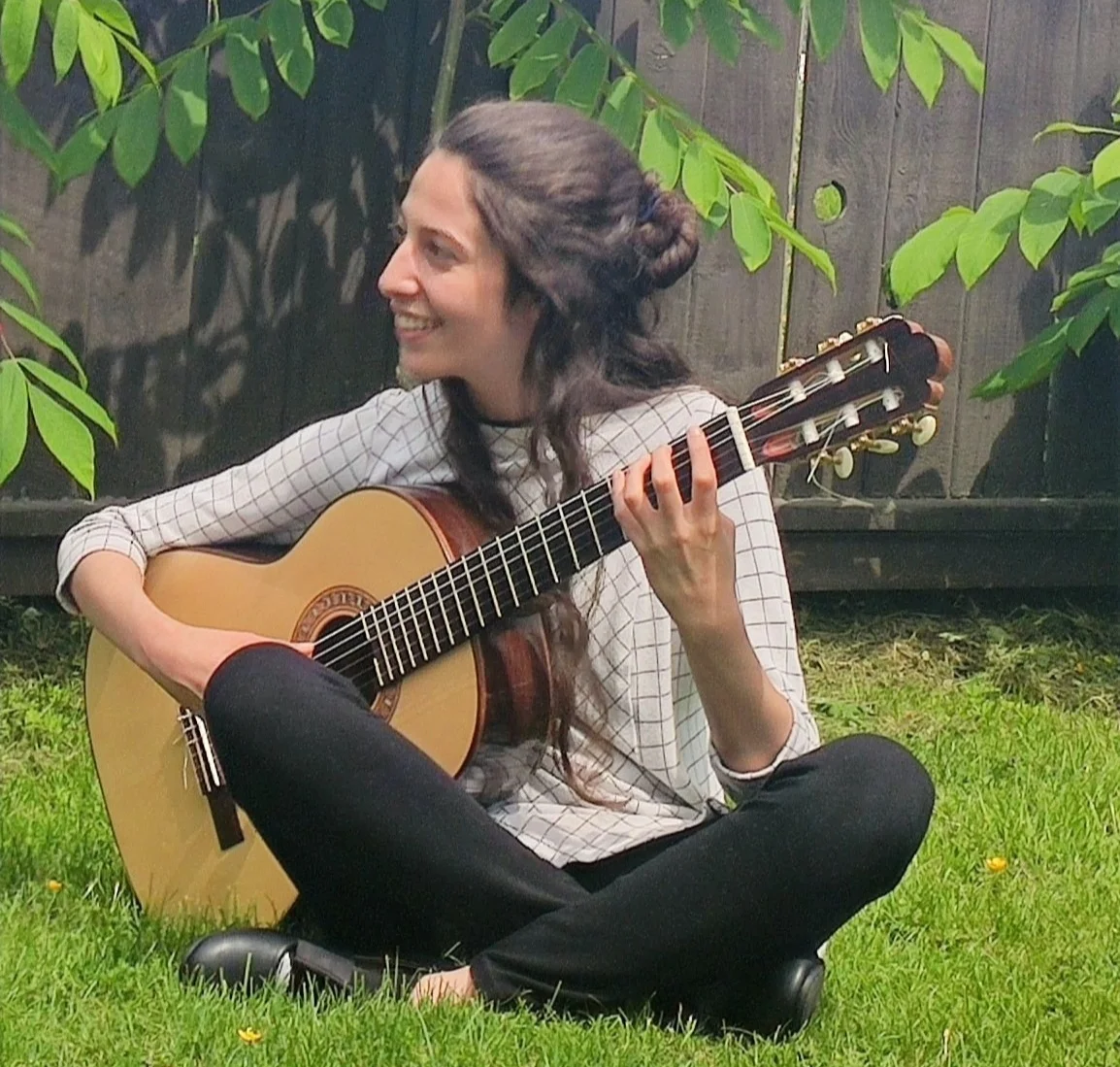
About The Author: Sara Wazani (B.Mus)
FretDojo Instructor and Expert Guitarist
From playing in chamber ensembles to teaching pop songs or jamming with local rock groups, Sara Wazani is a diverse professional guitarist and an encouraging expert instructor. Her travels across Europe and the Middle East eventually led her to Vancouver, Canada, where she received generous scholarships to complete her B.Mus. degree. She studied classical guitar performance with Hanh Nguyen at the Vancouver Academy of Music.
Sara loves music because it connects us on a different level than anything else. It can show us ourselves and others and give us an endless sense of discovery.


This type of lesson is what keeps me, and probably a lot of others, coming back to watch your videos. We aren’t yet at a point to benefit by your more rigorous courses but want to, at least, entertain ourselves and perhaps reach the level to dive into the deep end. Thanks for these and please keep them coming.
Hi Tom. Much appreciated. I’ll be sure to make sure Greg gets your comment! We do have courses for various levels including Jazz Guitar for Beginners and the new Comping 101 course. Both of them were made with early level players in mind so anytime you’re ready you may want to give them a try! In the meantime, enjoy the blog lessons!
Thank you Sara for sharing your talent and knowledge. Great video and info for getting started with this classic piece. Looking forward to mastering it.